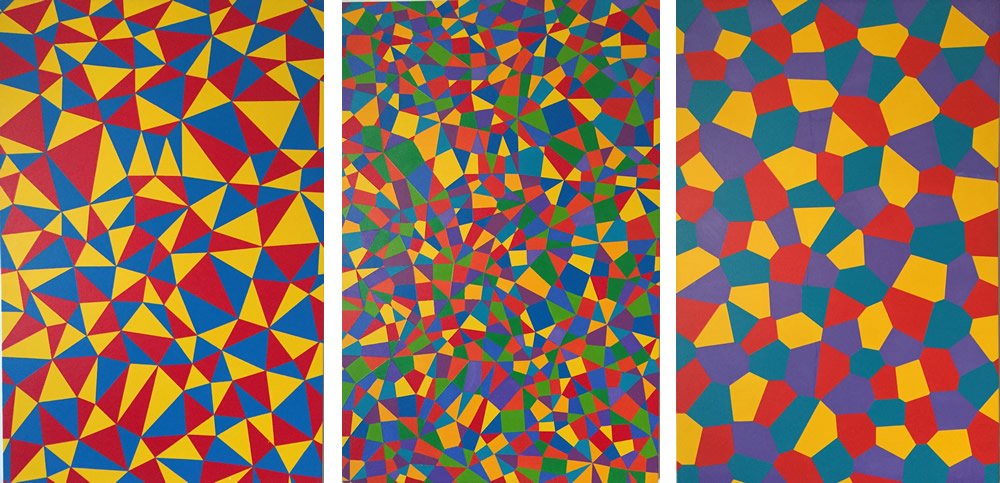Delaunay Triptych

Acrylic on canvas
3 parts, 36" h x 24" w
1997
This triptych studies the relationship between a Delaunay triangulation (left panel) and its mathematical dual known as a Voronoi diagram (right panel). Each vertex in the triangulation corresponds to a polygon in the Voronoi diagram. By definition, a Voronoi polygon encloses the region in the plane that is closest to a particular Delaunay vertex. The center panel is constructed as the superposition of the outlines in the Delaunay triangulation and the Voronoi diagram, so that it contains all of the edges from each.
Overall, this piece uses twelve colors spaced equally on the color wheel. The triangulation is filled in with three colors, with no adjacent triangles having the same color. The Voronoi polygons are filled in with four colors. In the center panel, the color of each subdivided region is derived from a combination of the colors used for the same location in the left panel and the right panel. The total number of combinations is 3x4 = 12, the number of colors used.
Reproductions of this painting are available (as three separate panels) through FineArtAmerica.com and Pixels.com.







